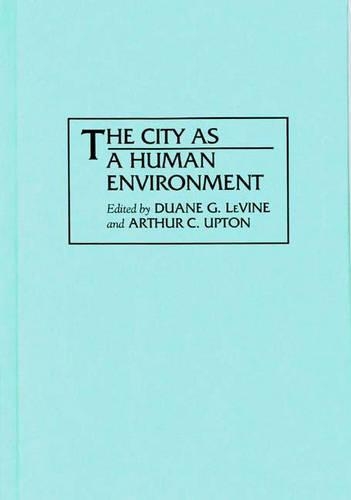
The City as a Human Environment
(Hardback)
Publishing Details
The City as a Human Environment
By (Author) Duane G. LeVine
Edited by Arthur C. Upton
Bloomsbury Publishing PLC
Praeger Publishers Inc
22nd November 1994
United States
Classifications
Tertiary Education
Non Fiction
Welfare and benefit systems
Population and demography
307.76
Physical Properties
Hardback
216
Description
This is a response to the need for up-to-date information about three major challenges posed by urbanization: buildings, transportation, and land use. Planning the built environment involves integrating all aspects of human life so that an esthetic, economic, and sustainable system is established. There are challenges which arise from this, but the primary goal is to provide adequate, safe, efficient, and affordable housing for the populations. The goal is to convert chaos to order, to make cities workable, to bar bad development, to encourage the building of necessary facilities, and to improve land use.
Reviews
Written for professionals in the field, the chapters range from the general to the specific and offer a good deal of practical information.-Choice
"Written for professionals in the field, the chapters range from the general to the specific and offer a good deal of practical information."-Choice
Author Bio
DUANE G. LeVINE is Manager, Science and Strategy Development, Environment and Safety at Exxon Corporation. ARTHUR C. UPTON, MD is formerly Professor of Environmental Medicine, and Director of the Institute of Environmental Medicine at the New York University School of Medicine. LeVine and Upton have edited Management of Hazardous Agents: Industrial and Regulatory Approaches (Praeger, 1992), and Management of Hazardous Agents: Social, Political and Policy Aspects (Praeger, 1992).
